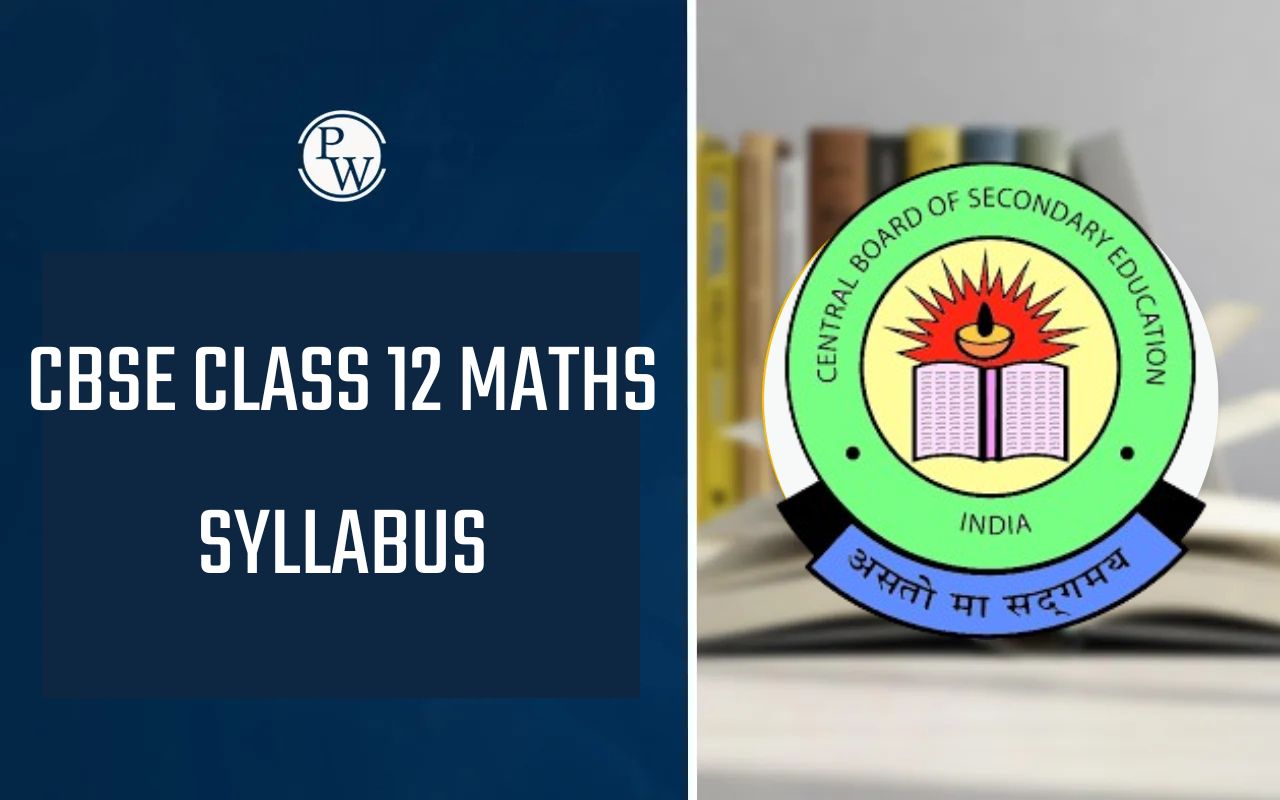
NCERT Solutions for Class 12 Chemistry Chapter 15: The NCERT Solutions for Class 12 Chemistry Chapter 15 Polymers provide a detailed understanding of the concepts related to the formation, classification, and applications of polymers.
With step-by-step explanations and practical examples, the solutions enable students to prepare effectively for their exams. These solutions are a great resource for exam preparation providing well-structured explanations to make learning easier and more effective.NCERT Solutions for Class 12 Chemistry Chapter 15 Overview
Polymers are large molecules formed by the repeated linking of smaller units called monomers through covalent bonds in a process known as polymerization. These macromolecules exhibit high molecular mass and unique physical properties, making them versatile in various applications. Polymers are classified into different types based on their source (natural or synthetic), structure (linear, branched, or cross-linked), and polymerization mechanism (addition or condensation). Examples include natural polymers like cellulose and proteins, and synthetic polymers like polythene, nylon, and Teflon. Their widespread use in industries such as packaging, textiles, and healthcare highlights their importance in daily life and technology.NCERT Solutions for Class 12 Chemistry Chapter 15 PDF
The NCERT Solutions for Class 12 Chemistry Chapter 15 Polymers help students understand important concepts like polymerization and types of polymers. These solutions are useful for board exams and competitive exams like JEE and NEET. You can easily download the PDF for offline access. The PDF link is available below for easy access.NCERT Solutions for Class 12 Chemistry Chapter 15 PDF
NCERT Solutions for Class 12 Chemistry Chapter 15 Polymers
Here are NCERT Solutions from Chapter 15 Polymers for Class 12 Chemistry along with their solutions:Q1: Explain the terms polymer and monomer.
Solution:
Polymers are large molecules with high molecular mass, made up of repeating units derived from smaller molecules called monomers. These monomers are joined together through covalent bonds to form polymers. Polymers can be both natural and synthetic. Examples of polymers include rubber, polyethylene, and nylon 6,6. Monomers like propene, ethene, vinyl chloride, and styrene combine to form various polymers.Q2: What are natural and synthetic polymers? Give two examples of each type.
Solution:
Natural polymers are found in nature and are produced by plants and animals. Examples include proteins, starch, and cellulose. Synthetic polymers, on the other hand, are man-made and produced through chemical processes. Examples include synthetic rubbers (such as Buna-S), synthetic fibers (like nylon 6,6), and plastics (like polyethylene).Q3: Distinguish between the terms homopolymer and copolymer and give an example of each.
Solution:
| HOMO-POLYMER | CO-POLYMER |
|---|---|
| A homopolymer is formed when polymerization occurs from a single type of monomer. The repeating units in the polymer are derived from one type of monomer. | A copolymer is formed when the polymerization involves two different monomers, resulting in a polymer with repeating units from both monomers. |
| Example: The homopolymer of ethene is polythene. | Example: The copolymer of styrene and 1,3-butadiene is Buna-S. |
Q4: How do you explain the functionality of a monomer?
Solution:
The functionality of a monomer refers to the number of bonding sites available on a particular monomer molecule, which determines how many bonds it can form during polymerization. For example, adipic acid and 1,3-butadiene have two bonding sites, while monomers like propene and ethene have one bonding site.Q5: Define the term polymerization.
Solution:
Polymerization is the process in which monomers with low molecular masses join together to form large macromolecules, known as polymers, through the formation of covalent bonds. In this process, repeated structural units from monomers are combined to form a polymer with high molecular mass.Q6: Is ( NH-CHR-CO )n a homopolymer or copolymer?
Solution:
Solution:
Polymers can be graded based on the type of molecular forces that hold their polymer chains together. These groups are:Elastomers :
Elastomers are polymers that have weak intermolecular forces, allowing them to stretch and return to their original shape. The molecular chains are held together by weak forces like van der Waals forces. Elastomers have high elasticity.Example : Natural rubber, Buna-N.
Fibers :
Fibers are polymers with strong intermolecular forces, such as hydrogen bonds, ionic bonds, or covalent bonds, making them strong and resistant to stretching. These polymers are designed to have high tensile strength and are typically used in textiles and fabrics.Example : Nylon, polyester.
Plastics :
Plastics are polymers that can be molded into various shapes when heated and are held together by covalent bonds between polymer chains. The strength of these forces varies depending on the type of plastic. Plastics are typically rigid and can be either thermosetting (hard and rigid) or thermoplastic (can be remolded).Example : Polythene (thermoplastic), Bakelite (thermosetting).
Q8: How can you differentiate between addition and condensation polymerisation?
Solution:
Addition Polymerization : In this type of polymerization, monomers with double or triple bonds react to form polymers. No small molecules are eliminated during the process.
- Example : The polymerization of ethene (ethylene) results in the formation of polyethene.
Condensation Polymerization : This process involves the reaction of bifunctional or trifunctional monomers, where a small molecule like water or hydrochloric acid is eliminated.
- Example : Nylon 6,6 is formed by the condensation of adipic acid and hexamethylenediamine.
Q9: Explain the term copolymerisation and give two examples.
Solution:
Copolymerisation is the process of forming polymers from two or more different monomers. In a copolymer, both types of monomer units are present in the polymer chain.
- Example 1 : The formation of Buna-S from 1,3-butadiene and styrene.
- Example 2 : The formation of Nylon 6,6 from adipic acid and hexamethylenediamine.
Q10: Write the free radical mechanism for the polymerisation of ethene.
Solution:
The polymerization of ethene to form polythene involves a free radical mechanism. The process starts by using an initiator like benzoyl peroxide, which decomposes to form free radicals. These free radicals react with ethene molecules to create a chain reaction, adding more ethene units to the growing polymer chain until termination occurs.Q11: Define thermoplastics and thermosetting polymers with two examples of each.
Solution:
Thermoplastics : These are linear or slightly branched polymers that can be repeatedly softened and hardened when heated. They are easily molded and reshaped.
- Examples : Polystyrene, Polythene.
Thermosetting Polymers : These polymers are cross-linked or heavily branched, making them rigid and hard. Once set, they cannot be softened by heating.
- Examples : Urea-formaldehyde resins, Bakelite.
Q12: Write the monomers used for getting the following polymers.
Solution:
- Polyvinyl chloride (PVC) : The monomer is Vinyl chloride .
- Teflon : The monomer is Tetrafluoroethylene (TFE) .
- Bakelite : The monomers are Phenol and Formaldehyde .
Q13: Write the name and structure of one of the common initiators used in free radical addition polymerisation.
Solution:
One of the common initiators used in free radical addition polymerization is Benzoyl peroxide . It decomposes to form free radicals, which initiate the polymerization of monomers like ethene to form polymers like polythene.Q14: How does the presence of double bonds in rubber molecules influence their structure and reactivity?
Solution:
Natural rubber is made up of linear chains of cis-polyisoprene , which contain double bonds between the isoprene units. These double bonds make the rubber molecule reactive and allow it to undergo chemical reactions such as vulcanization. The cis-configuration causes weak intermolecular interactions, leading to elasticity as the strands can slide over each other.Q15: Discuss the main purpose of vulcanisation of rubber.
Solution:
The vulcanization process is used to improve the properties of natural rubber. It involves heating rubber with sulfur to create cross-links between the polymer chains, making the rubber more durable, elastic, and resistant to abrasion. Vulcanized rubber maintains its properties over a wide temperature range and has better resistance to water and chemicals. It is commonly used in products like tires, seals, and gaskets.Benefits of Solving NCERT Solutions for Class 12 Chemistry Chapter 15
- Aligned with Exam Pattern : The solutions based on the NCERT syllabus, which is directly relevant to board exams, ensuring students focus on the right topics.
- Clear Understanding of Key Concepts : Topics like polymerization, types of polymers, and their applications are explained in detail, making it easier to answer related questions in exams.
- Practice of Commonly Asked Questions : Many board exam questions are directly or indirectly based on NCERT content, so solving these solutions prepares students for expected patterns.
- Improves Writing Skills : The structured answers guide students on how to write precise and accurate responses, a skill essential for scoring high marks.
- Time Management : Regular practice with NCERT solutions helps students understand how to approach questions quickly, saving time during exams.
- Confidence Booster : Knowing that they have covered the entire syllabus comprehensively through NCERT solutions gives students confidence while attempting the exam.
- Foundation for Competitive Exams: The clarity gained through solving these questions also helps in exams like NEET, JEE, and other chemistry-related entrance tests.
NCERT Solutions for Class 12 Chemistry Chapter 15 FAQs
What are polymers?
What is polymerization?
What is a copolymer?
What is vulcanization of rubber?










